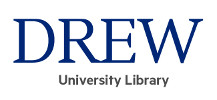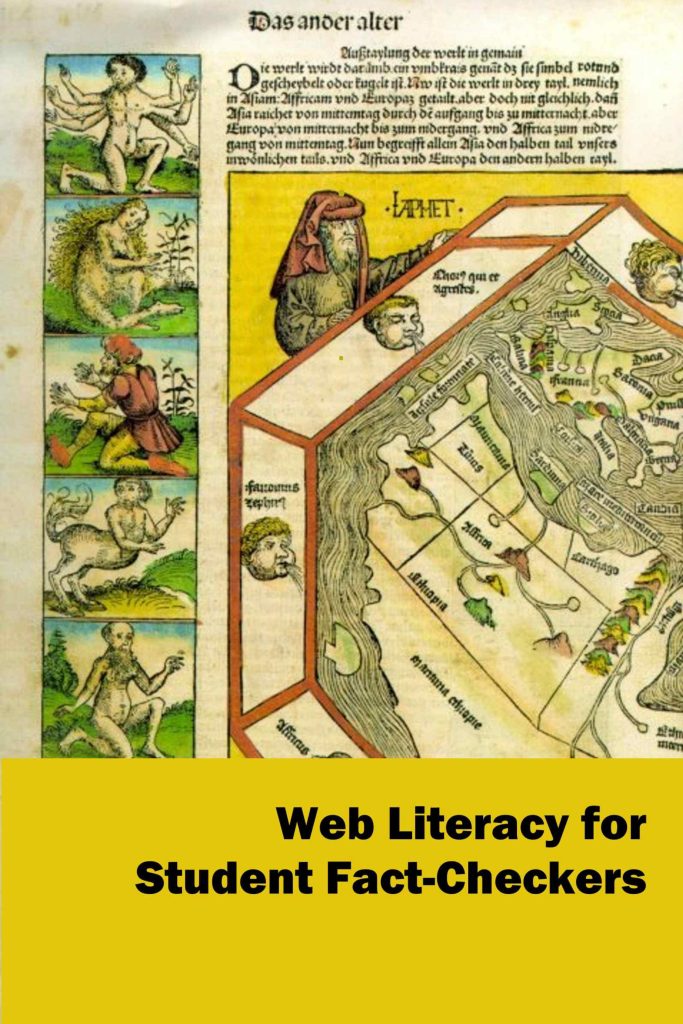 Library Guides
Library Guides Library Guides
Library Guides Web Literacy for Student Fact-Checkers by Mike Caufield
Web Literacy for Student Fact-Checkers by Mike CaufieldInformation is everywhere! While it's exciting that information can be uncovered almost instantaneously thanks to the internet, we must look carefully at the sources we find to make sure they can be trusted. All sources, scholarly or not, should be viewed with an attitude of informed skepticism. Whether you're doing research for an assignment, checking current events, or scrolling through social media, it's important to not immediately trust everything you see.
When you come across a source of information, think about:
Authority is a type of influence recognized within a community. For example, a person with a Ph.D. in English Language and Literature could be considered an authority when discussing Shakespeare, but not on a topic outside their expertise, like chemistry. Authority should be viewed with an attitude of informed skepticism. Keep an open mind and remain open to new perspectives, additional voices, and changes in schools of thought. It's important to acknowledge biases that privilege some sources of authority over others, especially in terms of others’ worldviews, gender, sexual orientation, and cultural orientations. Be critical! Don't automatically trust an authority just because they have appealing credentials.
When determining authority, ask yourself these questions:
It's important to consider why a source was created. What is the purpose of it being here?
A lot can be learned about a source just by analyzing the language used within it. The vocabulary, style, tone, and level of information contained within a source can help determine if it is fact, opinion, or propaganda. Facts are objective. Opinions and propaganda are subjective.
Think critically about the language used in a source by asking yourself these questions:
The information landscape is constantly changing! Facts and hypotheses are proven (and disproven) every day. New information is discovered that disproves what was previously understood to be fact. Because of this, it's important to ensure that the sources you discover and reference in your own work are up-to-date and reflect the current understanding of the topic. Check the date that the source was published. Also, look at the publication dates of the sources that the author references in their work. Even though an article was published this month, it would still be considered out-of-date if all of its references were from the previous century.
Some disciplines are more time-sensitive than others. For example, it's usually okay to use older sources that analyze works of literature, as the information they present is not something that changes rapidly. If you're researching a historical event, you may want to look for much older primary sources from the time of the event. Contrarily, new discoveries are frequently made in the sciences. The information presented in a source on genetic engineering from five years ago could vary greatly from a source published last month.
When considering the date of a source, ask yourself these questions:
Whenever someone makes an argument or states a fact, they should provide evidence to support their claim. Authors do this by citing the sources they referenced during their work. When an author is thorough in their research and provides a well-rounded bibliography, the trustworthiness of that source is increased. If an author cites their sources, look into those materials. Unfortunately, it's not uncommon to see that an author included an extensive bibliography of references, only to find out that they deliberately misinterpreted the information within those sources to support their argument or only selected biased sources that aligned with their point of view. Be extremely wary if an author doesn't cite anything at all. This usually means that they plagiarized the content or made it up entirely.
Remember: not all articles with bibliographies are scholarly, but all scholarly articles have bibliographies! To help determine if a source is trustworthy, consider the following about the evidence given:
What is the source of the material in question? The type of publication your source appears in matters. Newspapers and magazines are rarely, if ever, considered scholarly. However, academic books and journals are. Reference books such as encyclopedias and dictionaries are generally used only to verify facts or background information. It's important to consider who is funding the publication and what their motives and biases may be. How could the information within this source benefit them? If there are ads within the publication, it most likely isn't scholarly.
When examining the source of an article, consider the following:
When doing research, the sources you find need to be relevant to the topic you're working on. Even if it has all the right keywords and is scholarly, if the book or article has nothing to do with your topic, it's not going to help you. If it's an article in the Journal of the American Medical Association or Chemical and Engineering News on Ophelia, it's likely off-topic.
When determining a source's relevance to your research, consider:
Scholarly resources differ from popular resources in a variety of ways. Here are some of the distinguishing characteristics:
| Scholarly Journals | Popular Magazines |
| Contain more specialized subject matter |
Contain more general subject matter |
|
Articles include footnotes or endnotes and a list of references/works cited |
Rarely include bibliographies or notes |
|
Articles report on research |
Articles may be oriented toward general information or entertainment |
|
Articles almost always will be "refereed" (reviewed by a group of scholars in the field before publication); the term "peer-review" is also used |
Not peer-reviewed |
| Authors always identified; usually subject experts |
Authors may not be identified; generally reporters/journalists |
|
Articles often use terminology specific to a particular discipline |
Articles use language suitable to a more general audience of varying educational levels |
|
Graphics are generally used for purposes of illustration or to convey data |
Graphics and photos are common and are used for impact and appeal, as well as just illustration |
|
Little or no advertising in most disciplines |
Advertising throughout |
Primary sources are first-person accounts documented by someone who was directly involved in an event or issue without any additional commentary or interpretation.
Examples of primary sources include autobiographies, statistics and data, works of art and literature, diary entries, letters, newspaper articles written by reporters close to the source, and government documents.
Secondary sources reflect upon primary sources by offering an analysis and interpretation. The author is drawing conclusions based upon the information gathered from the primary source.
Examples of secondary sources include interpretations of statistics and data; biographies; and anything analyzing a historical event, something that already happened, or a primary resource (e.g., an examination of a piece of literature).
Tertiary sources index, organize, or compile other sources. They simply repackage information to help researchers understand the topic broadly and lead them to a secondary source. They do not offer any interpretation or analysis of the sources they collect.
Examples of tertiary sources include encyclopedia entries (including Wikipedia), indexes, bibliographies, and almanacs.
Questions? Need Help? Email reference@drew.edu
Drew University Library, http://www.drew.edu/library